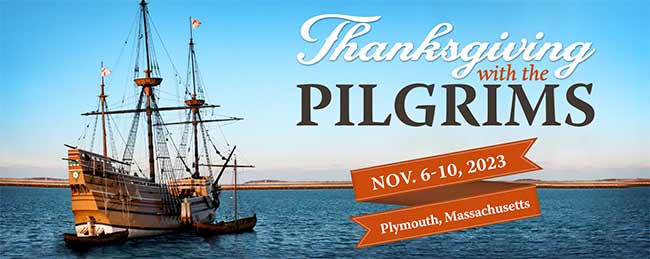
“For the Kingdom is the Lord’s and He shall rule over the nations.”
—Psalm 22:28
Alexander the Great and the Battle of Guagamela, October 1, 331 BC
 od ceased direct and written revelation in the era between the Old Testament and the New Testament, but He did not stop His providential disposition of history. Some astounding events occurred in that interim period that changed the course of history through the rise and conquests of the Greeks and Romans, some of which would have profound implications for the Church and for the future of all mankind. Alexander III of Macedon, known to history as the “Great,” conquered and administered the most extensive empire since that of the Persians. od ceased direct and written revelation in the era between the Old Testament and the New Testament, but He did not stop His providential disposition of history. Some astounding events occurred in that interim period that changed the course of history through the rise and conquests of the Greeks and Romans, some of which would have profound implications for the Church and for the future of all mankind. Alexander III of Macedon, known to history as the “Great,” conquered and administered the most extensive empire since that of the Persians.
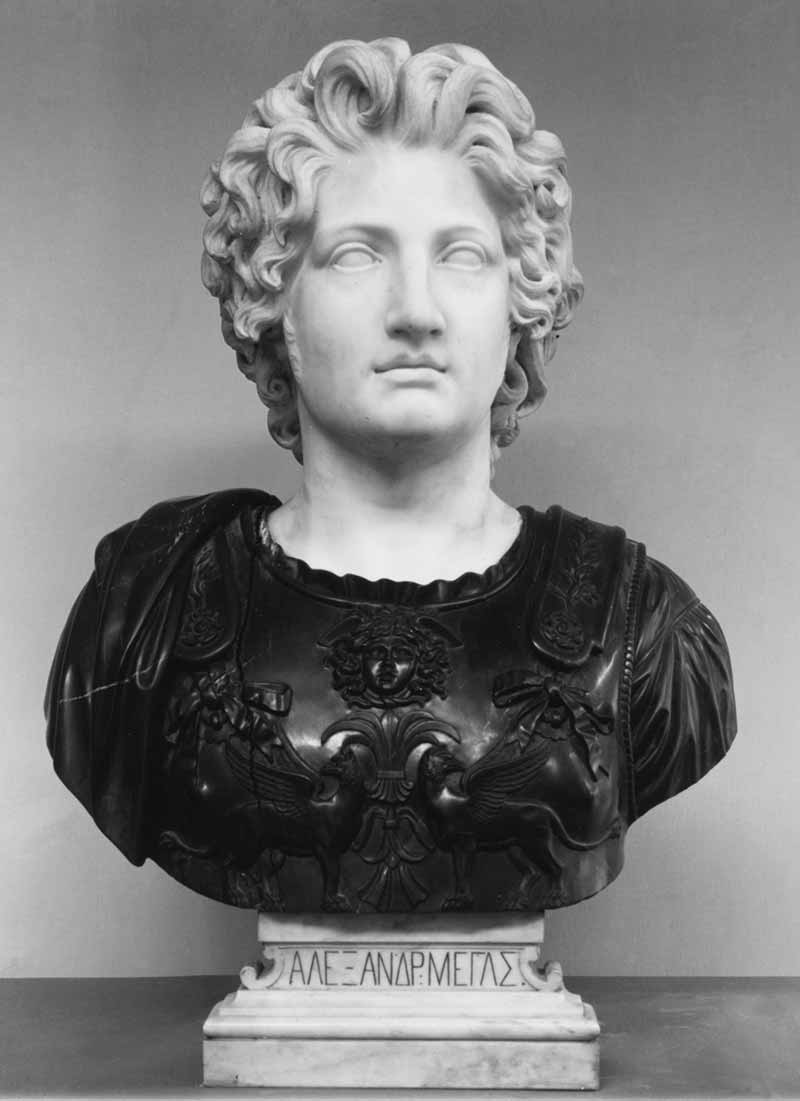
Bust of Alexander the Great (356-323 BC) in white and red marble
Olympias, one of the eight wives of Phillip of Macedon, gave birth to Alexander in 356 BC. Many myths surround his birth, likely recorded to create the illusion that he was more of a god than a man. The royal court provided the education of a prince, teaching him to read, fight, ride and hunt. At one point, the Greek philosopher Aristotle tutored him in logic and philosophy. Alexander proved both courageous and ambitious, as well as a masterful student. He trained a wild horse himself, which he named Bucephalus, and rode him to victory for more than twenty-five years.
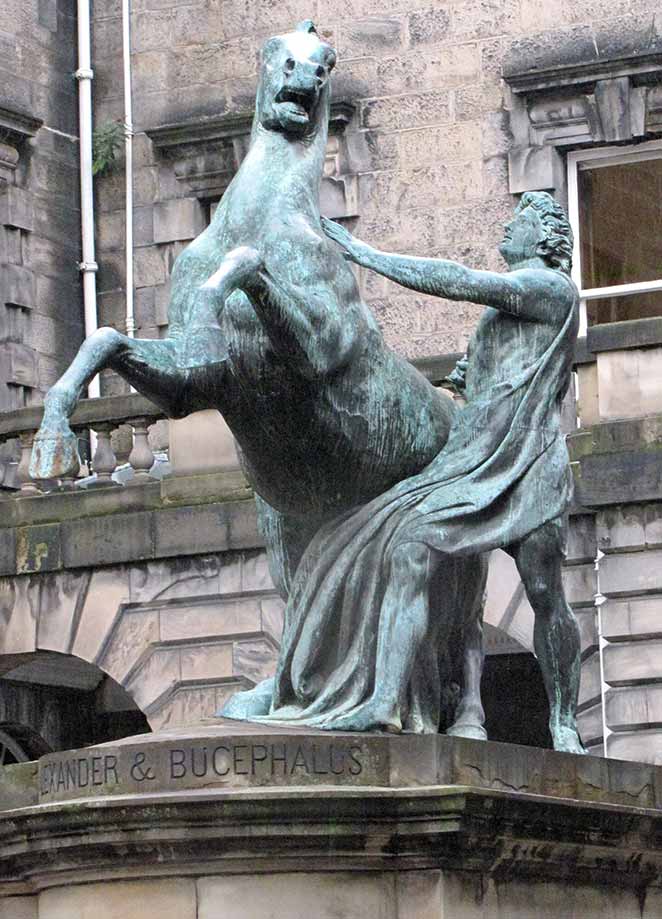
Alexander and Bucephalus, the legendary warhorse of Alexander
When King Phillip carried out military campaigns, he left sixteen-year-old Alexander in charge as regent and heir-apparent. In that capacity, the teenaged prince put down a Thracian rebellion, for which deed his father colonized the conquered territory and founded a city named after his son. Determined to invade Greece, Alexander organized an army and, with his father, marched through the pass at Thermopylae in 338 BC. They defeated both the Athenians and Thebans in bitter and tactically clever battles. Alexander led an entire wing of the army, proving once again he would be a worthy successor of his father. They created a Pan-Hellenic (i.e. Greek) alliance and outlined plans to cross into Asia and attack the Persian Empire.
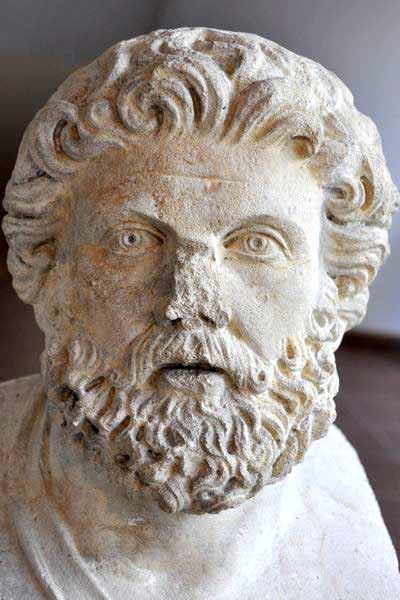
Philip II of Macedon (382-336 BC),
father of Alexander
|
|
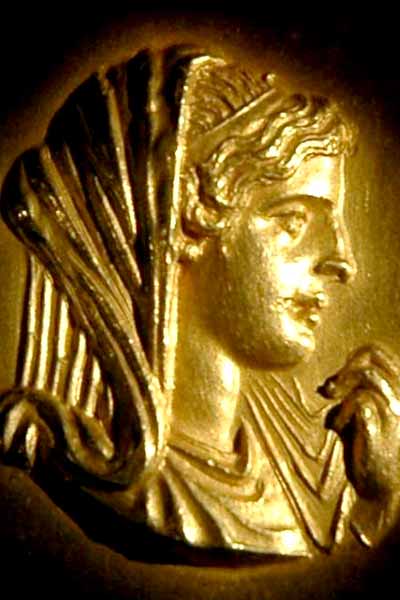
Olympias (375–316 BC),
mother of Alexander
|
Twenty-year-old Alexander was proclaimed king when Pausanius, the Captain of Phillip’s guard, assassinated him at his daughter’s wedding. The new king moved quickly to eliminate any possible rivals to the throne. When news of Phillip’s death made the rounds of the burgeoning Macedonian Empire, revolts broke out in several Greek city-states, in bids to throw off their imperial yokes. Alexander moved swiftly south with his 3,000-man cavalry and compelled the revolting armies to yield and join his forces against each of the other rebel armies. He showed mercy to the leaders and they all joined him.
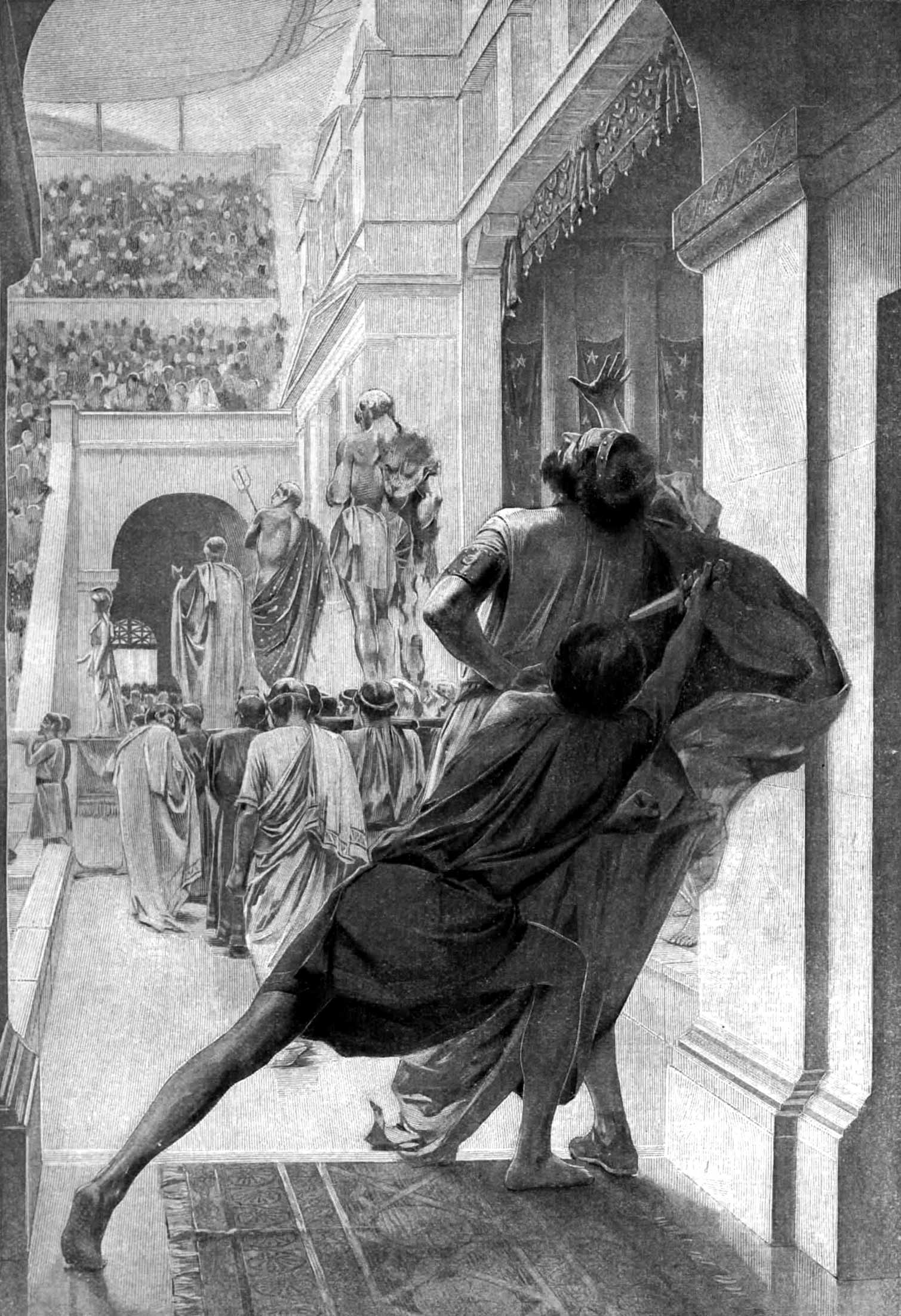
The assassination of Philip II of Macedon by the captain of his guard, Pausanius
In 334 BC Alexander crossed the Hellespont, the narrows between Europe and Anatolia (modern Turkey). He threw a spear into the soil and thanked the gods for giving him Asia. With more than 48,000 infantry, 6,000 cavalry, and a 120-ship navy, Alexander united the Greek trading cities of the Anatolian coast and marched inland to confront the Persians. In his expeditionary army marched Macedonians and Greek mercenaries from conquered city-states trained by Alexander in the tactics so effectively deployed in his conquests.
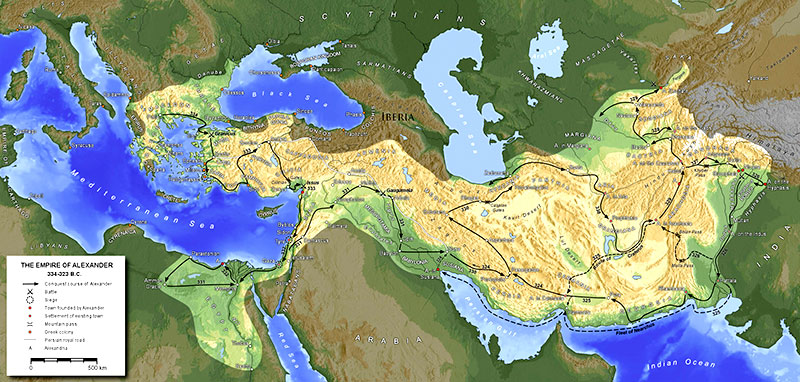
A map of Alexander the Great’s empire at its greatest extent c. 323 BC, including details of key roads, locations, and battles
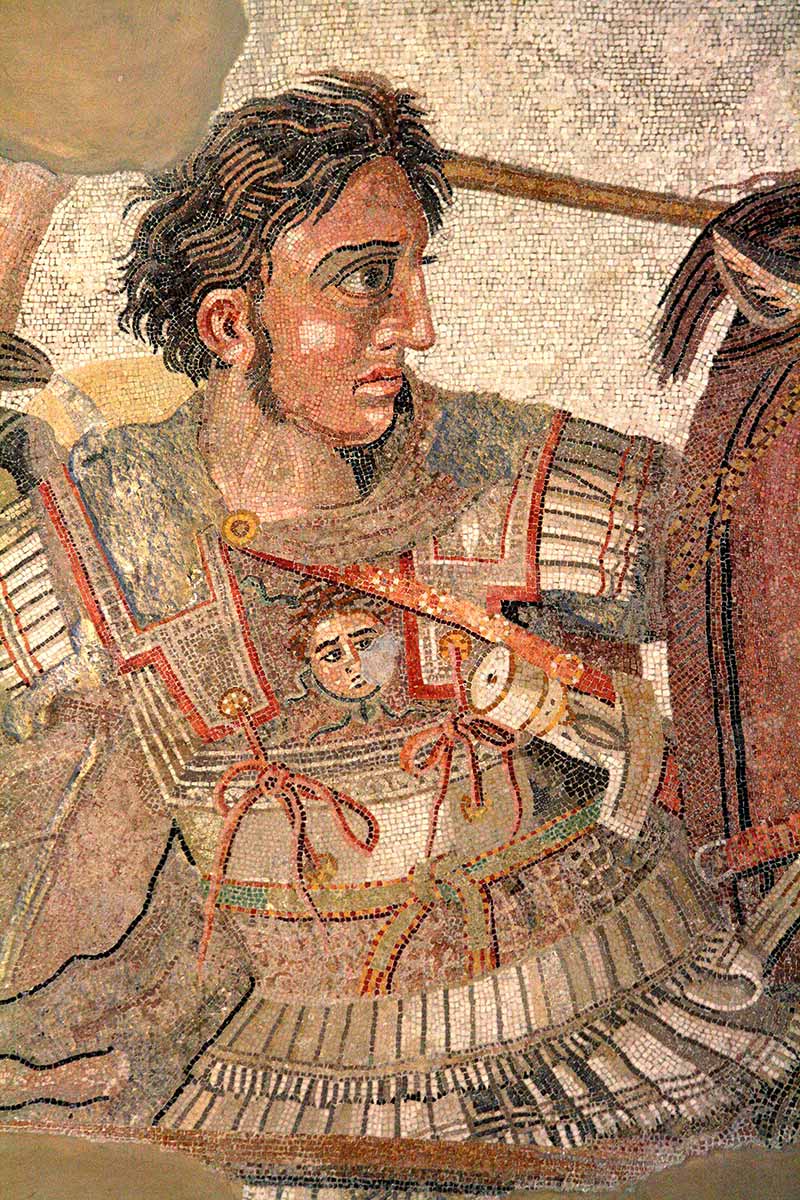
A mosaic of Alexander in battle against Darius, showing Alexander’s armor in detail
|
The basic formation was known as a phalanx; the front line infantry, known as Hypaspists, consisted of six or seven lines of men carrying a pike (sarissa) fourteen to twenty feet long with a leaf-shaped steel point. The first five lines presented their sarissa thrust forward, but each line a little higher in elevation than the one in front of them. The formation created a hedgehog of impenetrable spears that no infantry or cavalry—except elephants—could withstand. The heart of the cavalry force were the 1,300 “Companions,” commanded in person by Alexander. They marshalled for battle behind the javelin throwers and archers of Macedon. The 1,800 Thessalian cavalry were among the best in the world, and the balance of mounted forces represented the other Greek states. Their young emperor-general was infused with an unquenchable desire to conquer the world.
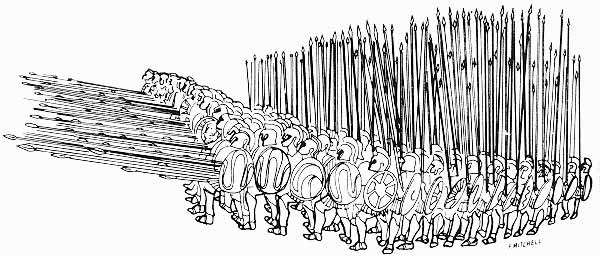
An illustration of the Macedonian phalanx formation
Alexander’s Persian campaign proved irresistible. He defeated Persian King Darius’s armies in the successive field battles of Granicus and Issus, and took the island city-fortress of Tyre after a six-month siege and the brilliant engineering feat of building a sixty-foot-wide mole from the shore to the island to storm the citadel, shelling with catapult bolts, and assaults by storming parties, in conjunction with a naval victory against the ships defending the harbor. Alexander crucified the two thousand captured survivors. He conquered Egypt and established a city which took his name, Alexandria.
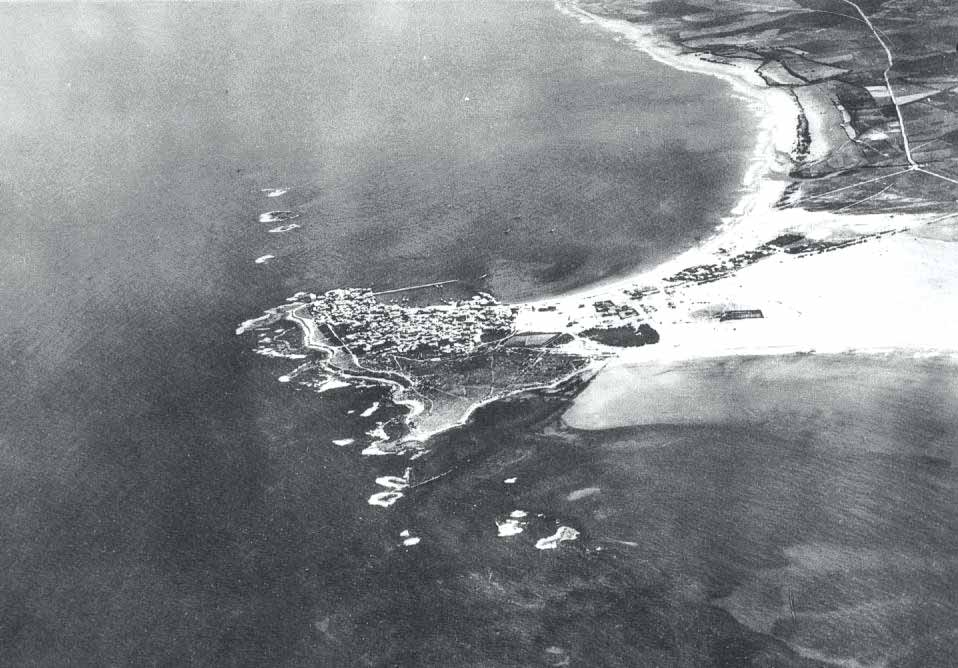
An aerial view of Tyre showing Alexander’s landbridge that still exists to this day
|
|
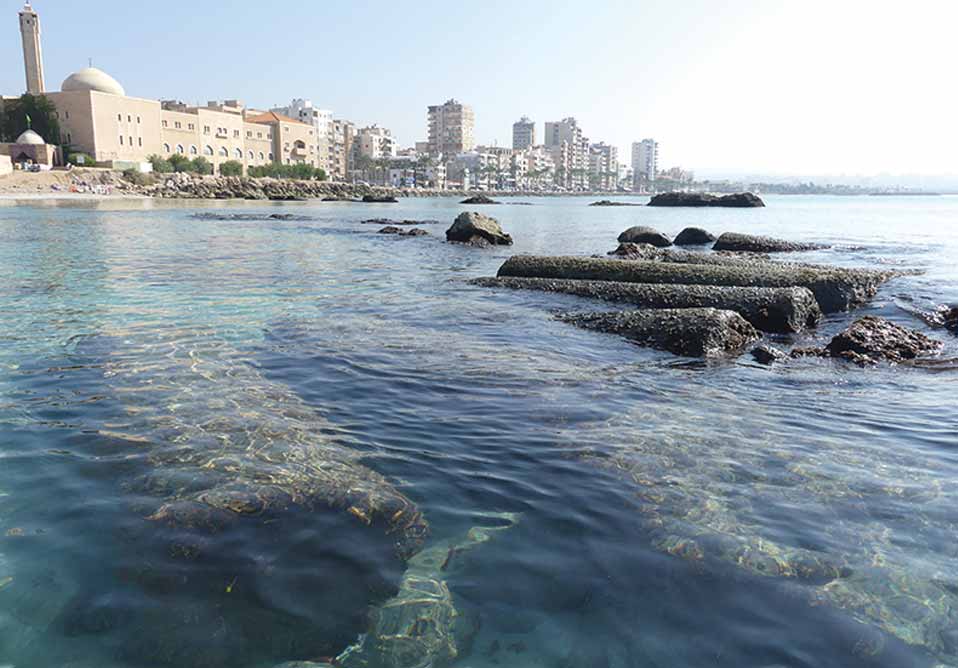
Ancient columns can be seen submerged in the foreground, with modern-day Tyre in the background
|
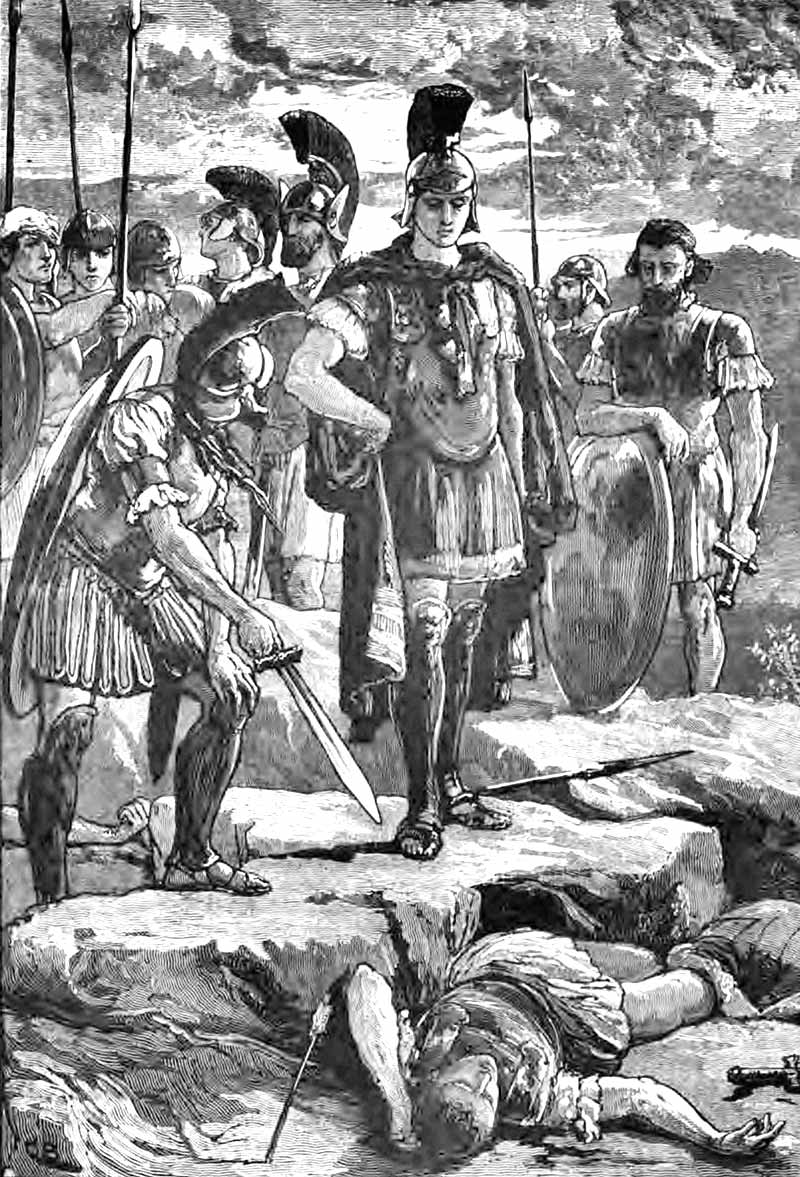
Alexander viewing the body of Darius
|
The Macedonian king finally brought the Persian monarch to bay at the Battle of Guagamela on October 1, 331 BC. Darius deployed about equal numbers, but the Persians also used fifteen elephants and fifty scythe chariots. Both commanders chose to direct the battle from the center of their line behind the heavy infantry. Alexander positioned two lines facing to the left flank and lines facing the rear, since the classic Persian tactics were to attack from two or three sides simultaneously. When the Persians opened a gap on their own flank, Alexander led a multi-thousands wedge into the gap and Darius fled the field. After an unsuccessful pursuit of the Persian commander, Alexander marched to Babylon to claim the fruits of victory over the Persian Empire. The Great King Darius died at the hands of his own citizens.
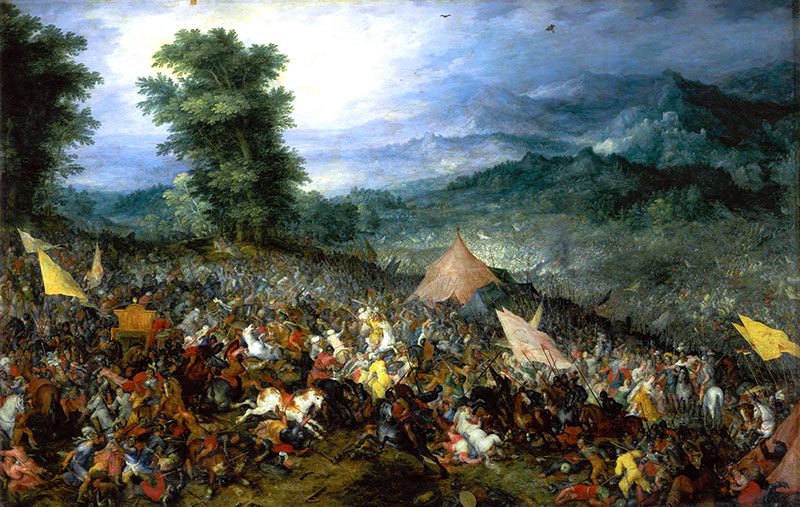
An artist’s depiction of the Battle of Guagamela on October 1, 331 BC
The victory over the Persians resulted in Alexander’s successful campaign against India, after which he decided to return to Babylon and consolidate his unprecedented expansion of Greek civilization and culture, and to plan a campaign against North Africa and Carthage. Although often outnumbered, he never lost a battle. He established military strategies and tactics that are worth study today. His central values were honor and personal glory and he believed he was a son of Zeus. Alexander’s boundless ambition stimulated his desire to rule the world. Alexander died, probably of foul play, in 323 BC, in Nebuchadnezzar’s Palace in Babylon at the age of thirty-two.
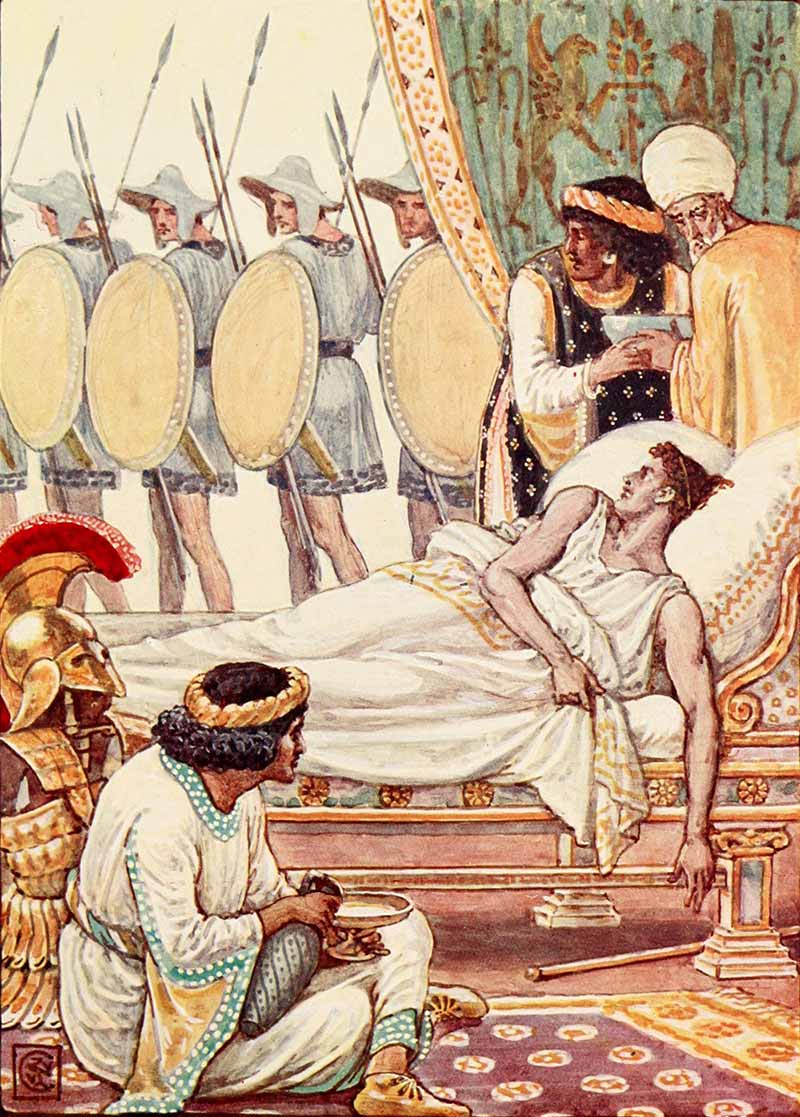
One version of the record of Alexander’s death has his men parading by him in silence as he lay dying in the palace of Nebuchadnezzar II in Babylon
A forty-year civil war ensued, ending with the Greek empire divided among three of Alexander’s generals, each with his own territorial jurisdiction. As a result of his enormous success, the middle east was still dominated by Greek language, culture, and philosophy, despite Roman domination, three hundred years later when another King was born in Bethlehem, whose Kingdom will know no end.

Image Credits:
1 Marble bust of Alexander (wikipedia.org)
2 Alexander & Bucephalus (wikipedia.org)
3 Philip II (wikipedia.org)
4 Olympias (wikipedia.org)
5 Assassination of Philip (wikipedia.org)
6 Map of the extent of Alexander’s Empire (wikipedia.org)
7 Mosaic of Alexander (wikipedia.org)
8 Macedonian phalanx formation (wikipedia.org)
9 Tyre, aerial (wikipedia.org)
10 Tyre, coast (wikipedia.org)
11 Death of Darius (wikipedia.org)
12 Battle of Guagamela (wikipedia.org)
13 Death of Alexander (wikipedia.org)
|






